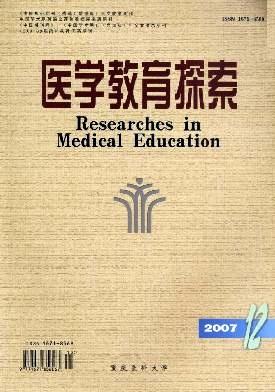Design of comprehensive nursing experiment project based on simulation technology for acute respiratory distress syndrome
引用次数: 0
Abstract
Objective To explore nursing experimental teaching mode on the basis of simulation technology to improve learning effect. Method s A total of 374 nursing students of Grade 2012 to 2014 were selected as the experimental group, and 292 nursing students of Grade 2010 to 2011 were selected as the control group. The experimental group adopted the comprehensive experimental teaching based on simulation technology, while the control group used traditional teaching. At the end of the course, the experimental group students were surveyed, and the two groups of students were given a unified examination. Data analyses were performed using SPSS 17.0 and the t-test was adopted to analyze the teaching effect for comparison of the two groups. Result s The recovery rate of the questionnaires in the experimental group was 100%, and the satisfaction rate was 95%. Behavioral performance self-evaluation showed that students had high self-evaluation in improving their independent learning ability (3.47±0.63), and low self-esteem in caring for the patient's psychological problems (2.62±0.68). The theoretical score of the experimental group was (77.03±2.55), and the theoretical score of the control group was (71.75±3.49). The difference was statistically significant (P=0.041). Conclusion The comprehensive nursing experiment project on the basis of simulation technology is conducive to promoting students' autonomous learning and improving their comprehensive quality and professional ability. Key words: Simulation teaching; Acute respiratory distress syndrome; Comprehensive nursing experiment基于仿真技术的急性呼吸窘迫综合征综合护理实验方案设计
目的探索基于模拟技术的护理学实验教学模式,提高学习效果。方法选取2012 ~ 2014级护理专业学生374名作为实验组,选取2010 ~ 2011级护理专业学生292名作为对照组。实验组采用基于仿真技术的综合实验教学,对照组采用传统教学。课程结束时,对实验组学生进行调查,对两组学生进行统一考试。采用SPSS 17.0进行数据分析,采用t检验对两组教学效果进行比较分析。结果实验组问卷回收率为100%,满意度为95%。行为表现自我评价显示,学生在提高自主学习能力方面的自我评价较高(3.47±0.63),在照顾患者心理问题方面的自我评价较低(2.62±0.68)。实验组理论得分为(77.03±2.55)分,对照组理论得分为(71.75±3.49)分。差异有统计学意义(P=0.041)。结论基于模拟技术的护理综合实验项目有利于促进学生自主学习,提高学生综合素质和专业能力。关键词:模拟教学;急性呼吸窘迫综合征;综合护理实验
本文章由计算机程序翻译,如有差异,请以英文原文为准。
求助全文
约1分钟内获得全文
求助全文

 求助内容:
求助内容: 应助结果提醒方式:
应助结果提醒方式:


